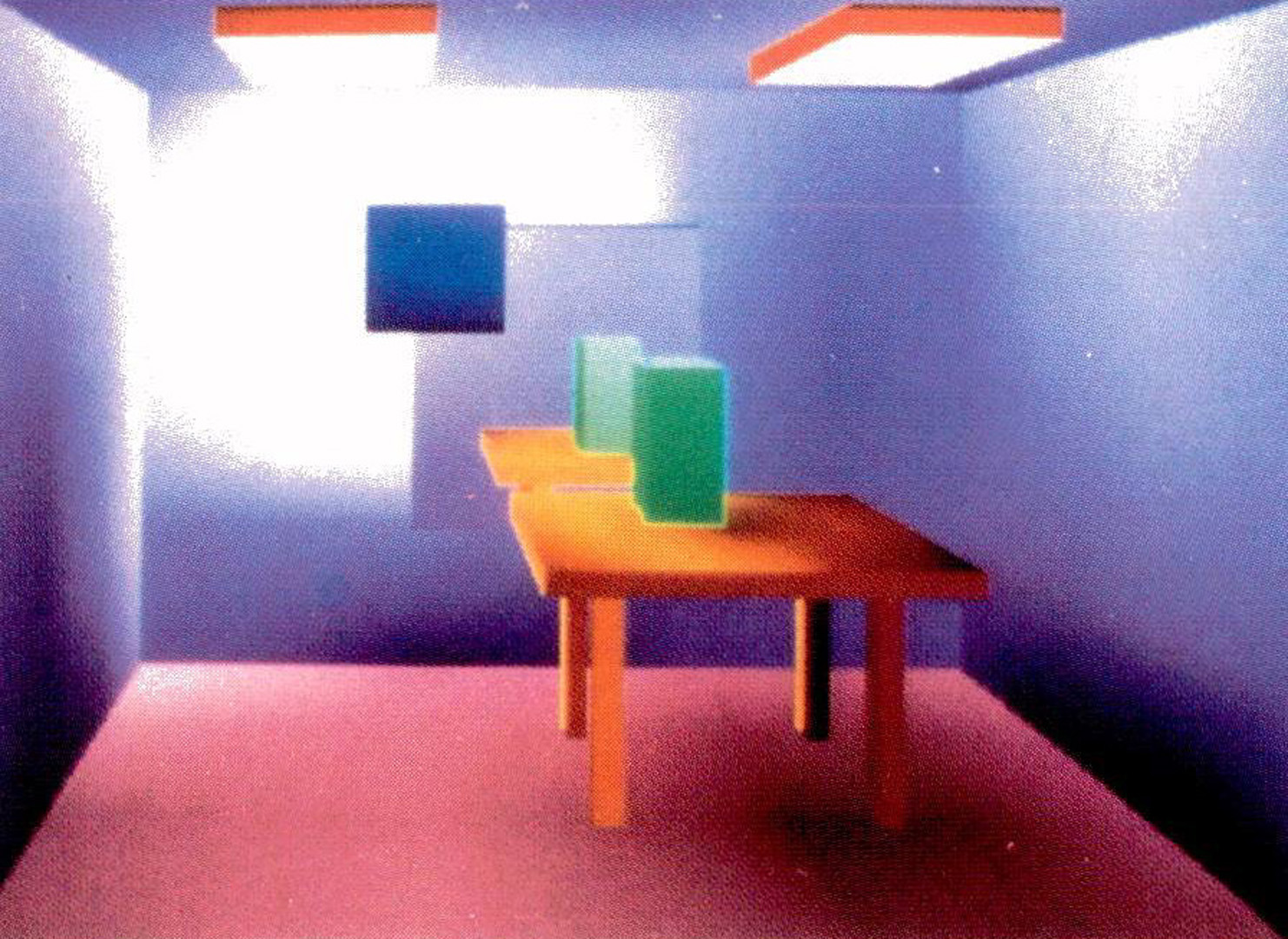“A new radiosity approach by procedural refinements for realistic image sythesis” by Shao, Peng and Liang
Conference:
Type(s):
Title:
- A new radiosity approach by procedural refinements for realistic image sythesis
Presenter(s)/Author(s):
Abstract:
According to the rendering equation, the diffuse and the specular components of the outgoing intensity of each surface patch should be solved simultaneously. Rather than establishing a huge set of linear equations defining the unknown directional intensities for all directions and all surface patches, we expand the concept of the delta form-factor which concerns the light energy transfer of a surface patch along a respective direction. As the delta form-factor for non-diffuse surface patches are dependent on the spatial and spectral distributions of light energy, they could not be calculated geometrically. In this paper, we present a new radiosity approach which progressively approximates the delta form-factors and the light energy distributions within a general environment to the correct solution. The nucleus of our approach is procedural iteration. Statistics indicate the potentials of this method for complex non-diffuse environments.
References:
1. Cohen, M. F., and Greenberg, D.P., The Hemi- Cube: h Radiosity Solution for Complex Environments, Computer Graphics (Proceedings SIGGRAPH 85), Voi.19, No.3, July 1985, pp.31-40.
2. Cohen, M. F., Greenberg, D. P., Immel, D. S., and Brock, P. J., An Efficient Radlosity Approach for Realistic Image Synthesis, IEEE CG&A, Vol.6, No.3, March 1986, pp.26-35.
3. Cook, R. L., Stochastic Sampling in Computer Graphics, ACM Transactions on Graphics, Vol.5, No.I, January 1986, pp.51-7Z.
4. Cook, R.L., Porter, T., and Carpenter, L., Distributed Ray Tracing, Computer Graphics (Proceedings SIGGRAPH 84), Vol.18, No.3, July 1984, pp.137-I45.
5. Goral, C. M., Torrance, K. E., Greenberg, D. P., and Battaile, B., Modeling the Interaction of Light Between Diffuse Surfaces, Computer Graphics (Proceedings SIGGRAPH 84), Vol.18, No.3, July 1984, pp.213-2Z2.
6. Hall, R. A., and Greenberg, D. P., A Testbed for Realistic Image Synthesis, IEEE CG&A, Vol.3, No.8, November 1983, pp.10-20.
7. Immel, D. S., Cohen, N. F., and Greenberg, D. P., A Radiosity Method for Non-Diffuse Environments, Computer Graphics (Proceedings SIGGRAPH 86), Vol.20, No.4, August 1986, pp.133-142.
8. Kajiya, J. T., The Rendering Equation, Computer Graphics (Proceedings SIGGRAPH 86), Vol.20, No.4, August 1986, pp.143-150.
9. Rogers, D. F., Procedural Elements for Computer Graphics, McGraw-Hill, New York, 1985.
10. Siegel, R., and Howell, J. R., Thermal Radiation Heat Transfer, Hemisphere Publishing Corporation, Washington DC., I981.
11. Sparrow, E. M., and Cess, R. D., Radiation Heat Transfer, Hemisphere Publishing Corporation, Washington DC., 1978.
12. Varga, R. S., Matrix Iterative Analysis, Prentice-Hall, New Jersey, 196Z.
13. Wallace, J. R., Cohen, M. F., and Greenberg, D. P., A Two-Pass Solution to the Rendering Equation: A Synthesis of Ray Tracing and Radiosity Methods, Computer Graphics (Proceedings SIGGRAPH 87), Vol.21, No.4, July 1987, pp.311-320.
14. Whitted, T., An Improved Illumination Model for Shaded Display, Comm. ACM, Vol.23, No.6, June 1980, pp.343-349.




